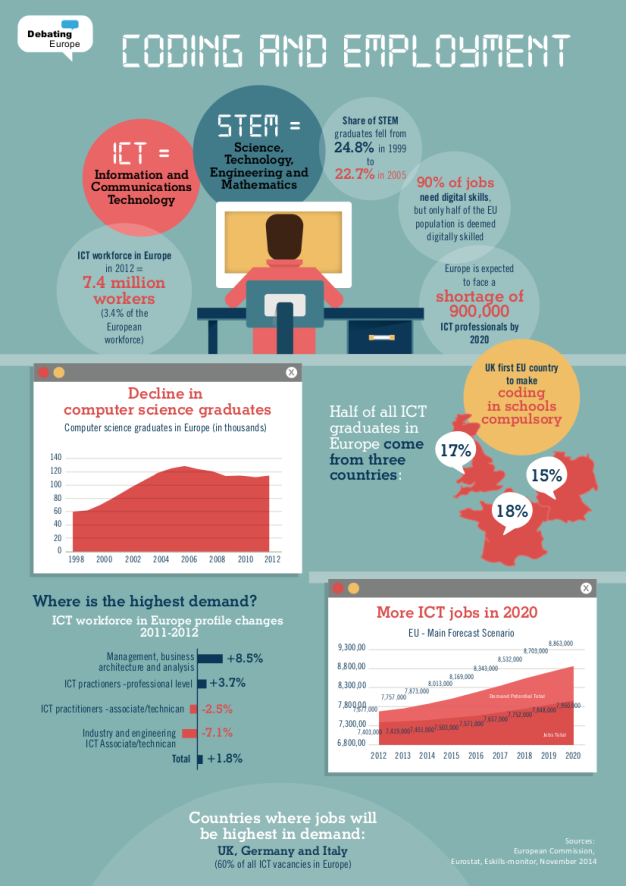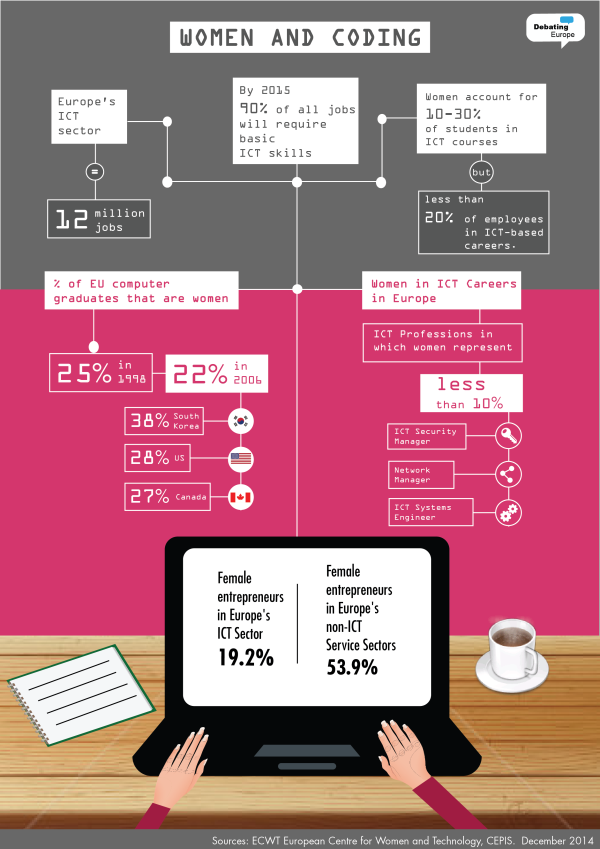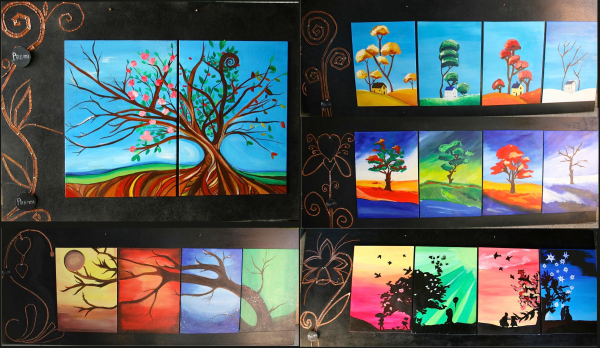
14th September 2015
From STEM to STEAM; Passing Through Coding, Tinkering & Making by Marco Vigelini
Our personal experiences are those that change and build our minds, ideas and ways of thinking. It is our experiences that give us a direct perception of the world around us. Some of us easily associate words such as Science, Technology, Engineering and Mathematics with negative memories of impatience, boredom and the impossibility to contextualize what we have studied in everyday life.
According to recent forecasts issued by the Digital Agenda For Europe there will be a growing trend in the demand for jobs in the Information and Communication Technology sectors. At the same time, the continuing decline of graduates in computer science and in STEM studies (Science, Technology, Engineering, Mathematics) has also been highlighted.
The Committee for Employment and Social Affairs at the European Parliament has stressed the importance ofof STEM skills in order to facilitate the current gap between supply and demand of these types of jobs. A sad constant of these predictions is the extremely low representation of women in these areas.
This has nothing to do with the technical skills of women, rather it is the result of stereotypes that we see repeated every day: in the series “I Can Be”, Barbie can certainly become a president or a sports star, but when it comes to computer engineering she needs the help of two men, Steven and Brian. This story is “sadly funny” only after reading the bitter comments of those who made the purchase on Amazon! Read about it here.
In my opinion, one way to reduce this gender gap and to be prepared as possible to meet the future expected employment demands in technological fields is to bring both girls and boys into the world of coding. We need to introduce children to coding right from the start of their studies; directly using the educational institution or through extra-curricular activities such as CoderDojo clubs.
On the subject of the growth of future professions that will require technical studies, the CoderDojo movement shows that creativity, experimentation and playfulness can fuel and encourage STEM learning. In this way, boys and girls can easily approach technical subjects, become interested in mathematics, appreciate engineering and wish to do science.
Recently in the United States the activities of tinkering were promoted as educational didactic even in after-school settings, recognizing their valuable support for learning and exploration of STEM concepts and practices.
“Tinkering and making have recently been taken up by educators as potentially rich intellectual activities, and as tools for broadening engagement in a variety of disciplines, including STEM (science, technology, engineering and math), literacy and the arts. Organizing educational experiences around tinkering often involves a radical emphasis on the process of creating and learning, and an effort to bring skills and concepts alive in the context of children’s creative pursuits. These efforts draw upon a range of progressive educational traditions and take an interdisciplinary approach to STEM learning that privileges problem-solving and iteration, grounding scientific inquiry in the developmentally rich context of invention, art and play”
(Tinkering, Learning & Equity in the After-school Setting. Shirin Vossoughi, Meg Escude, and Paula Hooper)
Whether running my Dojo (Allumiere) or running free coding lessons in a local elementary school, the most interesting outcome is really the reconsideration by girls of coding which is generally considered as being “for boys”. Through the activities of tinkering, making and coding girls fall in love with electronics, robotics and technology. This is proving to be a great way to break down any stereotypes that imply a gender gap in the access to the education of new technologies.
Last year we tried something different with an elementary class of third grade students (8 – 9 year olds), we decided to mix subjects that had very little in common, these subjects were painting and technology. Through tinkering and the strong will to experiment, two teachers and a local painter, Mariangela Arcangeli, worked together with the class using low-tech and high-tech tools to create “The paintings of the future” (title chosen by the class), which were interactive paintings made entirely by the young pupils.
Based on the theme “The Twelve Months”, the III A class of Allumiere’s elementary school decided to capture the essence of each month through the representation of the four seasons! Using only the chromatic element of the seasons, leaving the task of representing the spirit of the four seasons using colors, simple figures letting each child express their ideas freely. The tree, present in all the paintings for its simplicity of implementation, was chosen for its metaphorical message: the seasons and the consequent physical changes of the tree as a symbol of life as well as man and natural changes.
On the left side of their paintings children, combining art and electronics, have stylized flowers with copper wire and created circuits connecting small LED and batteries: Giving “old things” a new look, it was possible to readjust paper clips and use them like small switches giving the paintings light, color and interactivity.
Something similar had been made a long ago during the CoderDojo Roma session hosted at the Museum of Contemporary Art of Rome (MACRO). During that event the youth participants animated small circuits the mice of Toti Scialoja, one of the most important artist, poet and writers for children of the twentieth century!
Adding Art, as indeed many people around the world have done with their own experiments, The letter “A” has been incorporated as part of the STEM acronym. This adds some artistic emotionality and introduces the right pinch of irrationality into a scientifically ordered context: STEM becomes STEAM, that is Science, Technology, Engineering, Arts and Mathematics.
Another opportunity to check the interest raised by new technologies when used in unusual contexts was given in early August at the event “TolfArte”, The International Festival of Street Art and Artistic Craft, which was attended by over 50,000 visitors throughout the weekend.
The Dojo of Allumiere and Civitavecchia gathered together at a large booth and had the opportunity to tell and specify to many curious people about their coding, making and tinkering experiences. Teachers were intrigued by the innovative combination of teaching code and tinkering, parents were more interested in our 3D printer, recently self-built. There were children concentrated in exploring Minecraft worlds and others who interacted with sensors and discovered a different way of using conductive materials. We had teenagers fascinated by interesting STEAM projects made with Arduino boards by Lorenzo, Angelo and Ettore, boys equal in age that now take part in our sessions as youth Mentors. New high school students were excited to know that this year a mini fab lab will be built and hosted in the Technical Institute “Guglielmo Marconi” of Civitavecchia as a result of a collaboration between the headmaster Nicola Guzzone, the faculty members and CoderDojo Civitavecchia and thanks to the technical support of Roma Makers team.
A lot of people limit themselves only to use things without wondering how they work internally or without having the ability to look inside and possibly make changes.This means that we renounce a better understanding of the objects that surround us and we become mere passive users of systems, mechanisms and technology.
By cultivating the maker philosophy and promoting tinkering and coding, we can lay a solid foundation for those kids and young people who are intrigued by science, technology, art, engineering and maths. We can also involve more girls to encourage them to choose future career paths in scientific and technological areas.
By Marco Vigelini (Champion of CoderDojo Allumiere and mentor of CoderDojo Civitavecchia and CoderDojo Roma)



